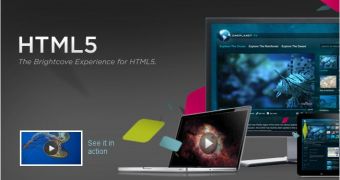HTML5 promises to be a great boon to advanced web apps and rich functionality online, which will now be available to developers through a standard, non-proprietary technology. There have been plenty of open standard advocates and also big companies championing the proposed standard, but the company that may end up making the biggest difference in HTML5 adoption is not the first one you'd think of. Google has been a big promoter of HTML5, but with Apple's determination not to include Flash in the iPhone or in the upcoming iPad, which runs on the same OS, it is pushing many publishers to turn to HTML5 as a means of getting their content on the hyped device.
The latest to make this move is Brightcove, the white-label video platform provider. The company is announcing that Apple’s iPad and iPhone and also Android devices will now get an HTML5-based video player by default instead of the Flash-based one. Unlike the Apple devices, Android does support Adobe Flash. Brightcove says this move will ensure that no user is left out and that its customers are able to reach their audience regardless of the device they're coming from.
"Our customers want to be able to deliver their video content to every screen without sacrificing the quality, interactivity and monetization capabilities they have come to expect from the Brightcove platform," Jeremy Allaire, Brightcove chairman and CEO, said. "The Brightcove Experience for HTML5 fills the gap between the current playback capabilities of the emerging standard and what our customers need to operate successful online video businesses."
The move was somewhat forced by the lack of Flash support in the Apple devices, but Brightcove says it's determined to bring its HTML5 video player on par with its Flash-based one. At the moment, the playback itself is not a problem, but advanced features available to publishers will come later. This includes audience measurement tools and its advertising platform. The video-platform provider hopes that the two players will be on par by the end of the year.
Support for HTML5 video is growing, but is still far from what it could be. YouTube has launched an HTML5 player recently, which gets the job done but is inferior to the Flash Player the site also offers. Vimeo has done a better job, though, and its HTML5 player is indistinguishable from the Flash one. Dailymotion has had an HTML5 player for several months now.

 14 DAY TRIAL //
14 DAY TRIAL //